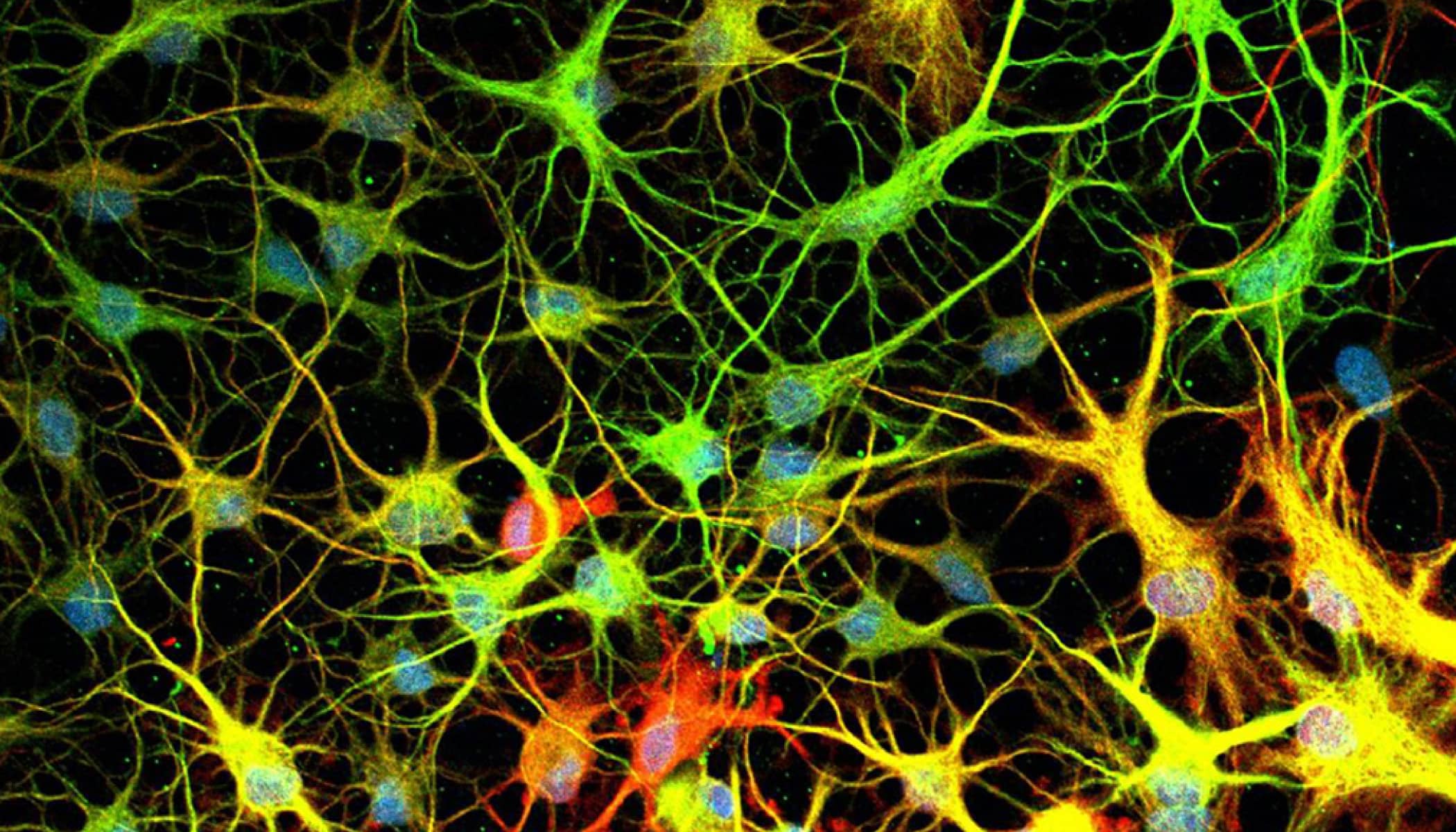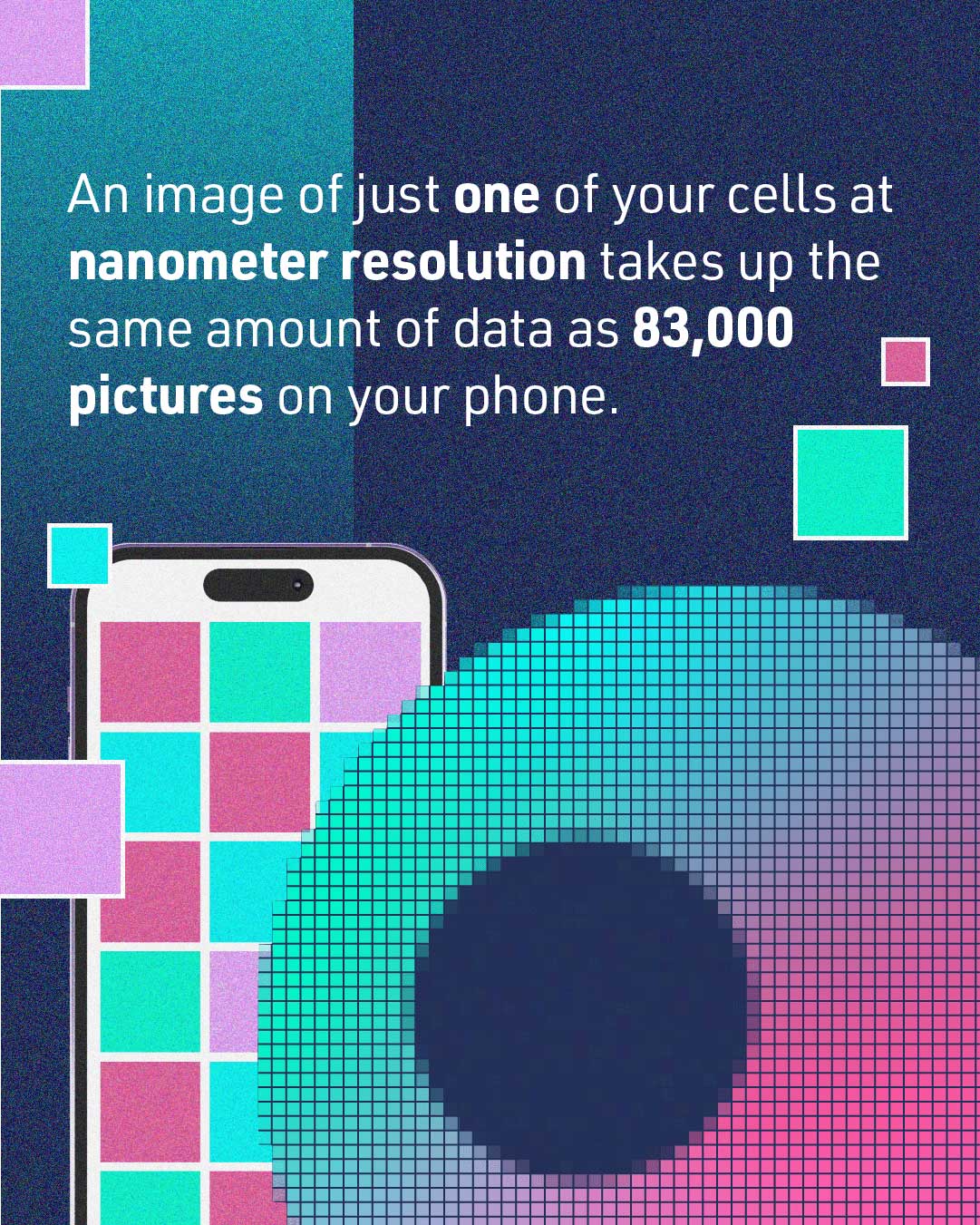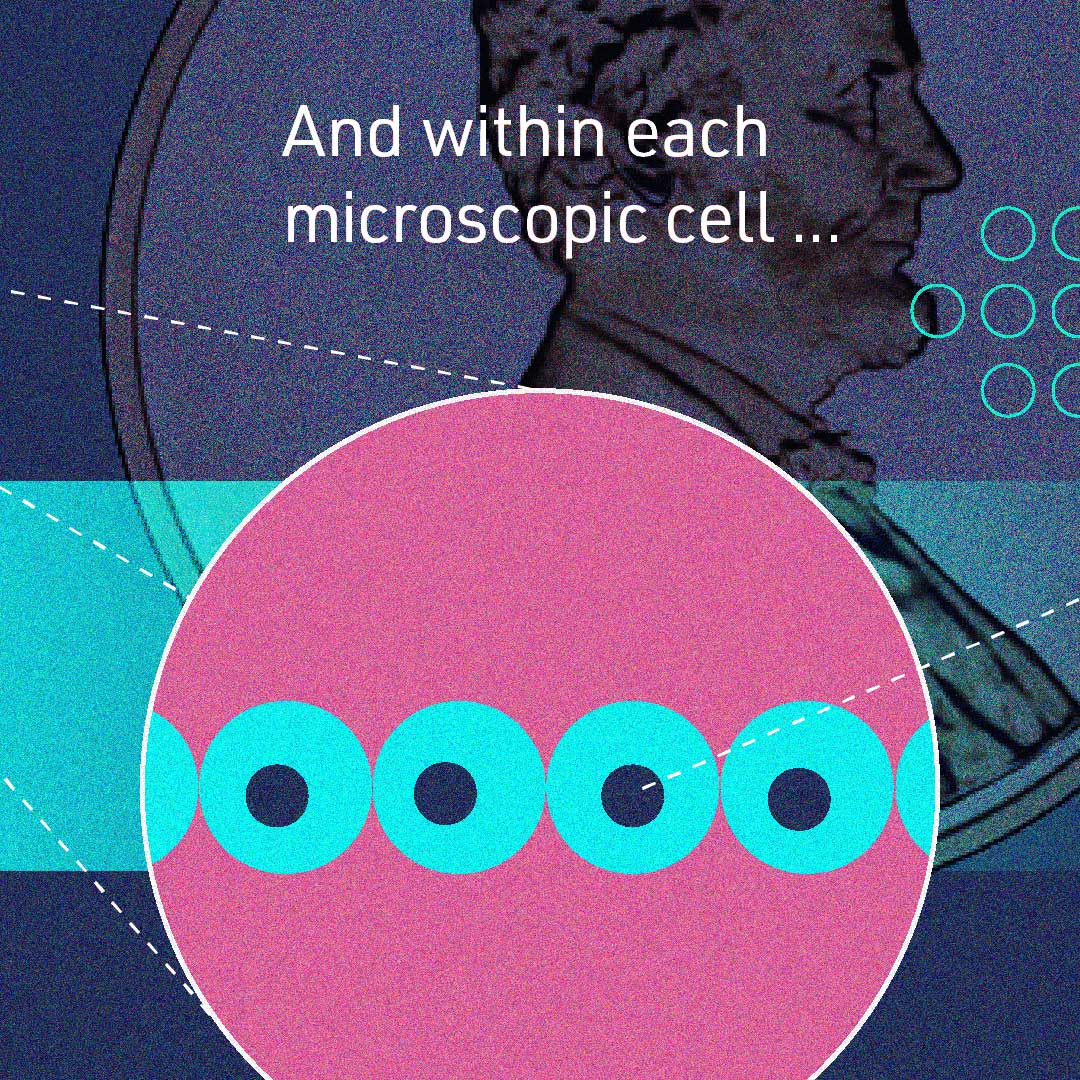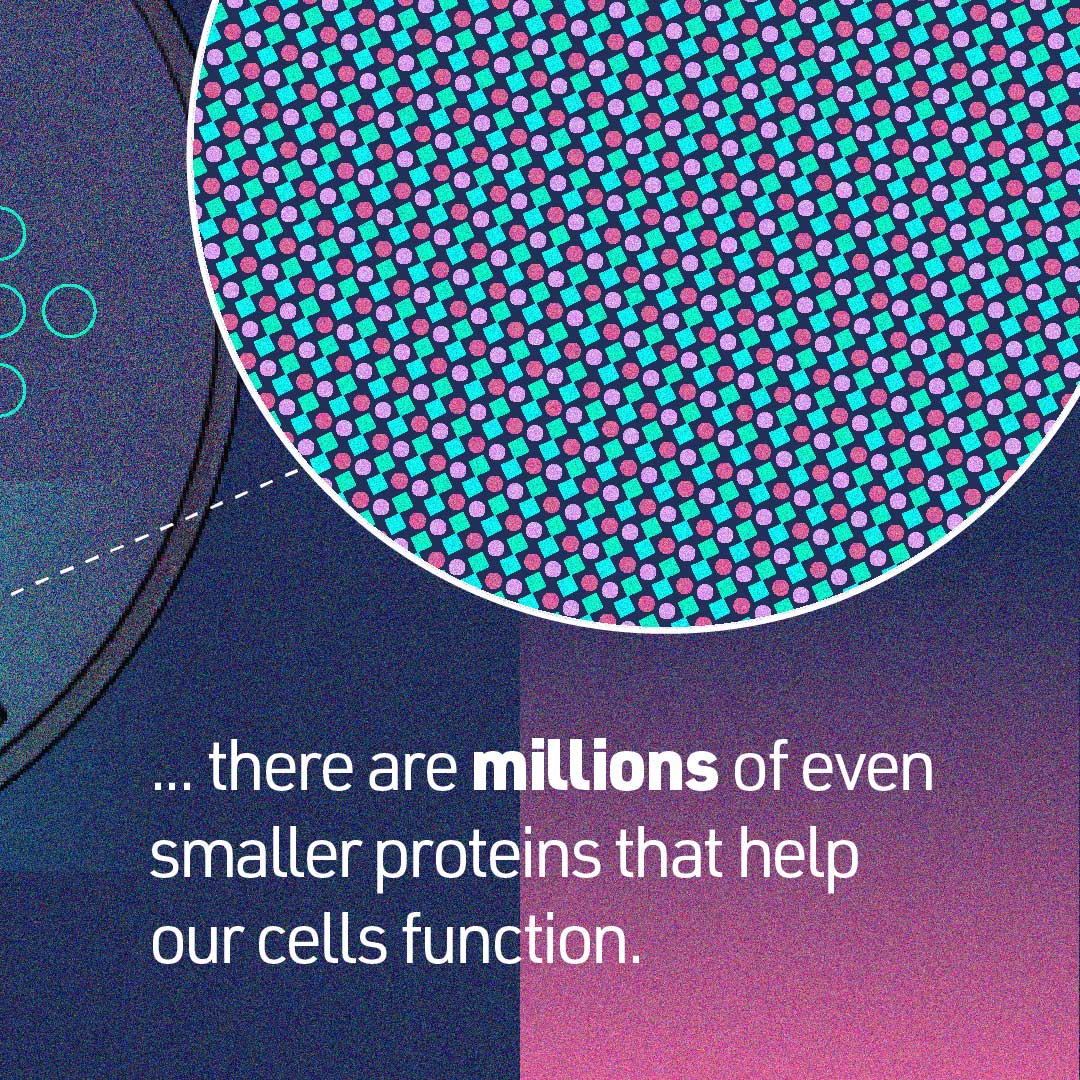Jan 27, 2023 · 4 min read
#ImagingTheFuture of Biomedicine
Learn how the scientific community is coming together to observe biology in unprecedented detail.

How do our cells work? That’s one of the biggest mysteries of life. Complicating this mystery further is the fact that the human body is made of over 37 trillion cells, each with millions of proteins that are so small, we can only see them with the best imaging technologies.
That’s why we’re supporting and developing innovative hardware and open source software tools that will help us look inside our cells at unprecedented resolution. The ability to directly visualize our cells in real time within our bodies is key to curing, preventing or managing all diseases. That’s imaging the future.
Also read: The Past, Present, and Future of Medical Imaging
Examining Biology at the Nanoscale
Most human cells are too small to be seen with the naked eye. For example, while a grain of salt can typically be seen without any magnification, imagine cutting it into five smaller pieces. Each of those pieces would be about the size of the average human cell. In fact, our cells are so tiny that, on average, about 635 cells could fit across the diameter of a penny.
The molecular components of our cells and all of the biochemistry surrounding them are even smaller, and it’s at this molecular scale that insights to what makes our cells healthy or sick are hiding. For example, take that same grain of salt, but this time cut it into 100,000 pieces. Now we’re dealing with pieces so small, they’re measured in nanometers. That’s the scale of larger proteins you’d find within a cell that are critical for a cell’s function.
Since the 16th century, microscopes have been helping scientists get a closer look at our biology. In the last few decades, advanced imaging technologies have illuminated microscopic details about our cells. Researchers continue to push the boundaries of current technology to get a front-row seat to how these building blocks of life function in everyday health and disease.
The precisely coordinated cell movements of the early embryo are key to how organisms form different tissues.
Here are some of those movements in all their glory, captured in a 12-hour timelapse of a zebrafish embryo by @czbiohub’s @loicaroyer + @Merlin_Lange #ImagingTheFuture pic.twitter.com/HEc8ipFMWD
— CZI Science (@cziscience) January 25, 2023
Building Solutions for Complex Data

Imaging technology doesn’t stop at the microscope. A lot of key insights gleaned from high-resolution images come from the way those images are analyzed. And imaging at the nanoscale brings new challenges to that process. For example, imaging just one cell at nanometer resolution takes up the same amount of data as about 83,000 photos on your phone.
The research community is overcoming this data challenge with collaboration. For example, napari is a community-built, open-source tool designed for browsing, annotating and analyzing these types of large and complex images. With the CZI project napari hub, plugins created by the scientific community are openly accessible for those who want to perform advanced image analysis without any coding experience. In the last two years, researchers have downloaded napari plugins over 123,000 times.
Learn more about some of the amazing biology captured using napari:
Imaging grantee @priscaliberali grows mini 3D organs called organoids and analyzes them using @napari_imaging to study intestinal regeneration. Now she’s developing a new napari plugin to make it easier for other researchers to do the same #ImagingTheFuture pic.twitter.com/zcV2uMh95V
— CZI Science (@cziscience) January 24, 2023
Biology: the only time when multiplication and division are the same thing!
🎥 Imaging grantee Rudolf Oldenbourg, using polarized light microscopy, which will be super-powered for instant 3D imaging by his @napari_imaging plugins #ImagingTheFuture pic.twitter.com/8Y2FpGVavt
— Chan Zuckerberg Initiative (@ChanZuckerberg) January 26, 2023
The imaging community continues to push the limits for what is possible to observe. But with so much to discover, global collaboration is key to unlocking the next big breakthroughs.
Meet some of the imaging scientists building expert imaging networks around the world:
Join the conversation about how breakthrough imaging technologies are accelerating biomedicine with #ImagingTheFuture.








